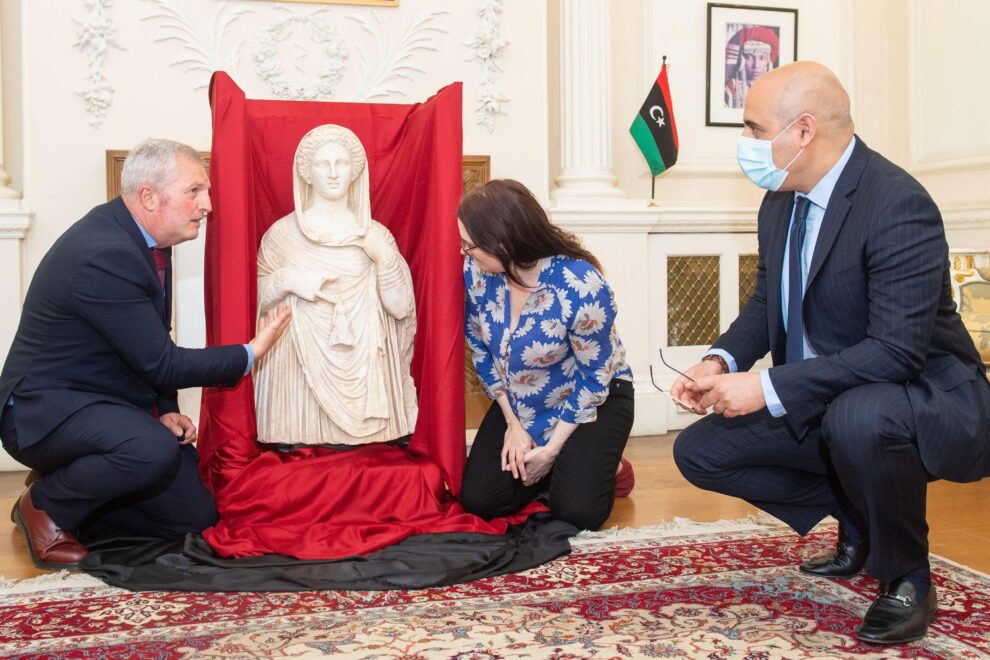The British Museum employee sacked after the disappearance of precious objects has been named as a senior curator who worked at the institution for 30 years.
Peter Higgs was allegedly dismissed earlier this year after the museum realised that gold jewellery, semi-precious stones and glass dating from the 15th century BC to the 19th century AD were missing, stolen or damaged.
On Wednesday, the museum announced that it had put “emergency measures” in place and ordered an independent review of security. The Metropolitan police launched an investigation. Higgs, 56, was the museum’s curator of Greek collections, Greek sculpture and the Hellenistic period until he was sacked.
His son, Greg, said his father had “not done anything”. He told the Telegraph: “He’s not happy about it at all. He’s lost his job and his reputation and I don’t think it was fair. It couldn’t have been [him]. I don’t think there is even anything missing as far as I’m aware.”
His father had “lost all faith in the museum”, he added.
A spokesperson for the British Museum said they could not comment because of the police investigation.
On Wednesday, George Osborne, the museum’s chair, said the trustees had “taken decisive action to deal with the situation, working with the team at the museum. We called in the police, imposed emergency measures to increase security, set up an independent review into what happened and lessons to learn, and used all the disciplinary powers available to us to deal with the individual we believe to be responsible.”
The British Museum said it had discovered earlier this year that items from its collections were missing. It has not said exactly what the employee is believed to have done, or whether there was a delay between the employee being sacked and the police being involved. No one has been arrested.
Christopher Marinello of Art Recovery International, which has recovered $600m (£470m) of artwork over 35 years, said that he had heard reports that some of the missing objects had already been sold.
“To be honest, it’s pretty shocking. We get reports of museum thefts every day from around the world. But this is the British Museum, one of the most important and well-funded museums in the world.
“I know everybody’s meeting right now about security issues. It’s unfortunate that they’re discussing security issues after the fact. But that’s where we are.”
The British Museum “should have got the police involved right away”, as soon as it knew objects were missing, he said.
In the UK, he said, there were too few police officers working on art and heritage crime. “There are two in London. In Italy, there are more than 300 police officers devoted to cultural heritage crimes.”
In order to recover stolen artworks and heritage objects, the institution “needs to be very clear about what has been taken and put it on databases. Then the trade – collectors, dealers, auction houses – needs to exercise due diligence in checking the databases.
“I don’t think the British Museum knows exactly what has gone missing. It seems that the individual took objects that would sell under the radar, that weren’t of major importance or they wouldn’t have been in storage.”
Arthur Brand, who has recovered stolen artefacts worth up to €400m (£340m) from around the world, said it was common for such thefts to be an “inside job”.
The British Museum would have hundreds of thousands of small objects “which are very difficult to guard and very easy to put in your pocket”. Someone was “smart enough to steal things easy to sell – jewellery that can be dismantled. Gold and silver can be melted down, stones can be recut. “There is always a small percentage of people in the jewellery business who will look the other way.” If the thief was forced to resort to the black market, they would only get a fraction of the object’s worth, he said.
In 2019, Brand recovered an 18-carat gold ring gifted by Oscar Wilde to Magdalen College, Oxford, that had been stolen 17 years earlier. The ring was recovered in Hatton Garden, the jewellery centre of London.
Source: The Guardian











